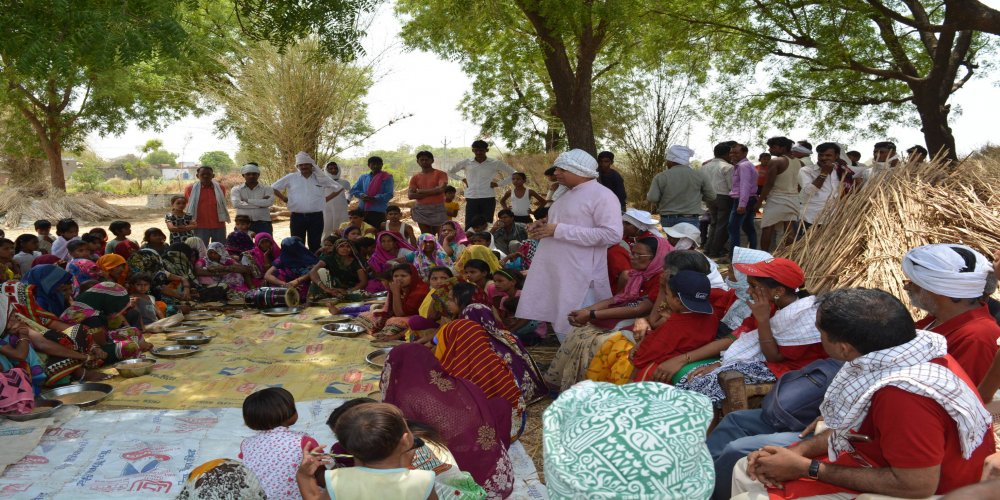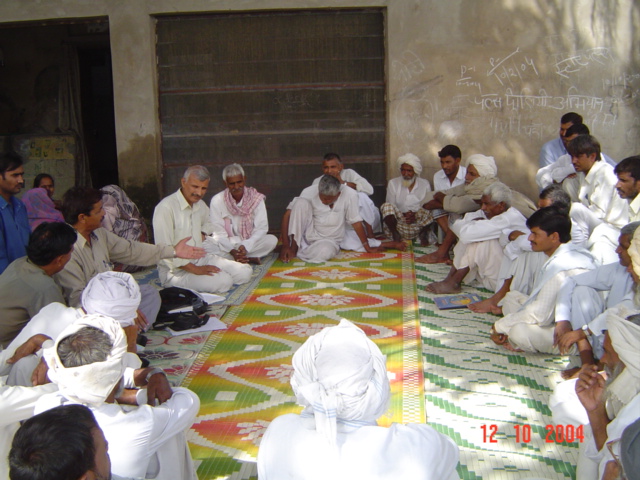By Shriya Tandon

If Akbar were to rise from the dead today, he’d have a pretty hard time making sense of the world we currently live in, right? Be it technology, administration, apparel, economy, or city planning, we’ve come too far along and all semblance that the present may have to the centuries-old past has been reduced to a minimal. However, if there is one institution that Akbar wouldn’t have trouble recognizing for exactly what it is, it would be that of ‘Khap Panchayats’ – evidently because they’ve evolved so little.
Khaps are organizations of communities that represent one or more clans. Existing mostly in northern India, they are common among the people of Western Uttar Pradesh and Haryana; although, they are also found in similar forms in other parts of the country. Khap Panchayat is a socio-political organization that traces its origin back approximately to the 15th century and comprises of the communities, castes, and sub-castes at the regional level. Khaps have ample influence over societies where ‘Jats’ are the dominant caste and the institution has invited severe criticism for preventing social transformation and preserving caste-orthodoxy.

Since long now they have been critically viewed as quasi-judicial bodies that tend to pronounce barbarous penalties on the grounds of archaic beliefs, traditions, and customs. In an article on Feminism In India, Priyanshi writes, “Khap Panchayats are extra-constitutional and do not fall in with the Gram Panchayat structure which is based on democratically conducted elections and finds constitutional support with the Constitution (73rd Amendment) Act, 1996”. Khap Panchayats unarguably have social and political significance for certain communities; however, it is important to remember that legally, they are nothing more than an extra-constitutional body with no judicial backing for the role they play. By existing beyond the constitutionally laid down laws, Khap Panchayats have taken it upon themselves to establish and maintain communal harmony by whichever means deemed fit. There seems to exist an impenetrable wall between the ongoing wave of modernization in India and the almost feudal mentality of people in the ‘Khap Panchayats’. Not only is this a huge disservice to the non-dominant classes of people whose agency is routinely brought into question but also this gravely impacts women, regardless of their caste or class, and their liberties. For a long time now, women have been wrongfully considered as the harbourers of honour and integrity of communities; therefore, when it comes to safeguarding ‘communal honour’ for the Khaps, women are the worst sufferers.
We are all well aware that the decision-making process and the process of meting out punishments do not flow from some ‘rule of law’ that the Khap Panchayats may have because they have none. Had it not been for the ‘honour killing’ of Manoj and Babli for marrying in the same gotra, and that leading to a historic verdict convicting the defendants of ‘honour killings’, there would have been an incessant rise in these killings and if that doesn’t speak volumes about the apathy and ignorance of Khap Panchayats, what does? Had that verdict been a lesson enough, there wouldn’t have been any need for the recent Supreme Court judgement prohibiting Khap Panchayats from stalling marriages between consenting adults. It’s not like these incidents take place without our knowledge of them. We know and we choose to ignore without realizing how bleak it is for our society to be more casual about honour killings than about equal rights for all. Something as personal as marriage is being ruled upon by a coterie of men with their conscience being ruled by dogma and bigotry. Where exactly does that leave us as a developing and progressing nation?
The continued existence of Khap Panchayats often finds defence in arguments similar to ‘they are more closely connected with the people at grassroots level’ or ‘they are a means of delivering quick justice in small scale civil disputes’. However, the pitfalls of their existence outweigh the few advantages that they may have by a good margin. Let’s also not forget that the only community which deems the institution of Khap Panchayats relevant and important today is the upper-caste, upper-class population of our country which is mostly orthodox and intolerant. From taking the duty of ‘preservation of cultural roots’ in their own hands to justifying injustice in the name of delivering speedy justice, Khap Panchayats have since long ceased to serve us as a developing nation. Indoctrinating the people to internalize the idea of social stratification based on caste, class, and gender, they have created conservative roots which constantly weigh us down. They have become a weight that is not worth being carried forward as the nation progresses.


Great read!